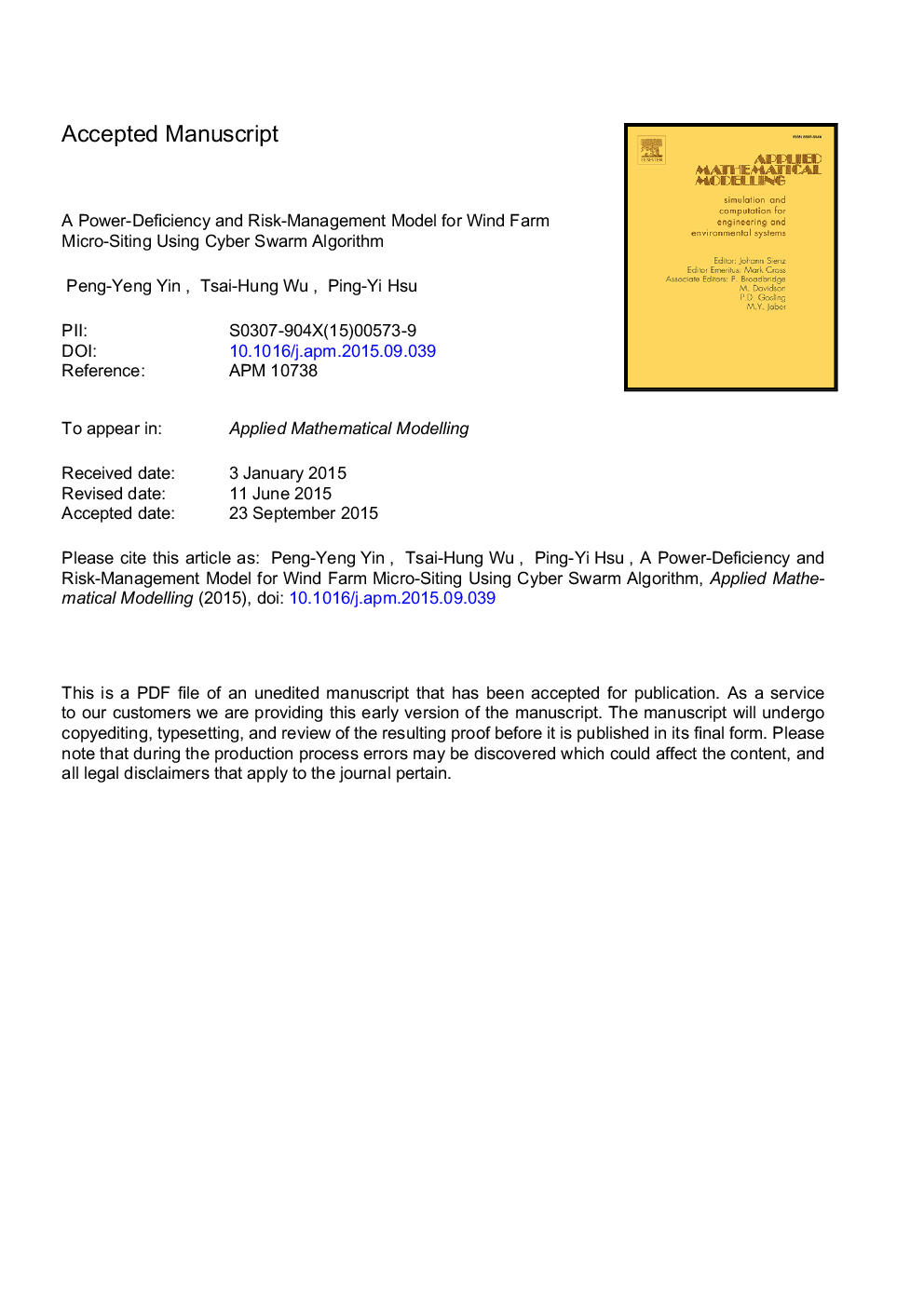| Article ID | Journal | Published Year | Pages | File Type |
|---|---|---|---|---|
| 10677614 | Applied Mathematical Modelling | 2016 | 37 Pages |
Abstract
The usage of fossil fuels has caused severe damages to the natural environment. In the last decade, the renewable energy production is growing rapidly in major industry countries. As of 2014, wind power generation exceeded 4% of total electricity demand worldwide. Classic wind farm micro-siting models aim to minimize the cost of energy (COE). However, the risk of the power deficiency could be high with these models because of the variations of wind conditions and electricity demands. This paper proposes a power-deficiency and risk-management (PDRM) model of micro-siting for mitigating the power deficiency risk under demand while still keeping the COE as effective as that obtained by classic planning models. Our PDRM model is able to provide risk analyses with alternative risk tolerance settings and power deficiency measures. The flexibility of the PDRM model is helpful for the decision makers to choose the most appropriate solution from our analyses based on their business value and applications. We further develop a Cyber Swarm Algorithm (CSA) to approximate the optimal solution of the PDRM model. The robustness of the CSA is verified with statistical methods including the convergence analysis and the worst-case analysis.
Related Topics
Physical Sciences and Engineering
Engineering
Computational Mechanics
Authors
Peng-Yeng Yin, Tsai-Hung Wu, Ping-Yi Hsu,
